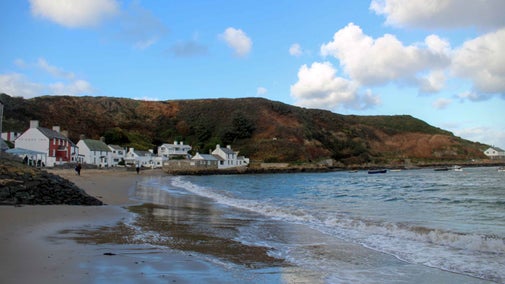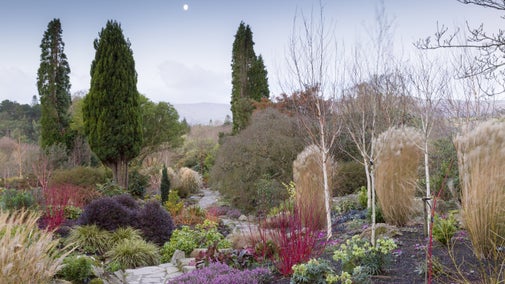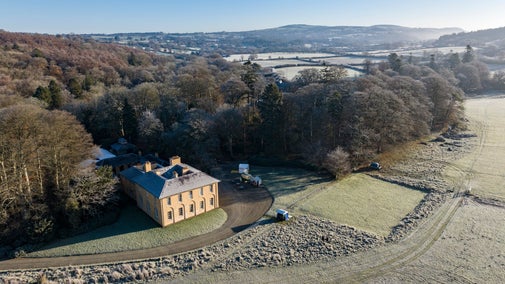
Discover more in Wales
A Celtic land with an industrial past steeped in myth, legend, poetry and song. Croeso i Gymru.

We care for 157 miles of Welsh coast which include some of the best beaches in Wales, from stretches of golden sand and hidden coves, to wild seascapes and sections of the Wales Coast Path.
From the picture-postcard village of Porthdinllaen, the 'whistling sands' of Porthor and the sandy cove of Llanbedrog, there's plenty to explore on the Llŷn Peninsula.
An old fishing village perched on the end of a thin ribbon of land stretching into the Irish Sea, with clear sheltered waters and spectacular views.

A sandy beach with a wooded, craggy landscape overlooking Cardigan Bay. Well known for its colourful beach huts, Llanbedrog is a real gem of Llŷn.

A great family beach famous for its ‘whistling sands’ and glistening waters with spectacular views along the rugged northern coastline of the Llŷn Peninsula.

A small cove at the tip of the Llŷn Peninsula, which serves as a port for local fishermen and the departure point for visits to Bardsey Island.

Explore Anglesey’s industrial heritage along the Wales Coast Path at Cemaes, discover Cemlyn’s National Nature Reserve and enjoy the popular sandy bay of Porth Dafach.
An Area of Outstanding Natural Beauty with a ruggedly beautiful coastline of rocks, small bays and headlands to delight walkers.

Discover one of Wales' most unspoilt coastlines in Ceredigion with the hidden coves of Penbryn, Mwnt’s sandy beach and coastal walks at New Quay.
Discover Gower, an Area of Outstanding Natural Beauty which includes Rhosili, voted one of Britain’s best beaches, the award-winning Three Cliffs Bay and the salt marsh at Cwm Ivy.
Breathtaking Rhosili bay, has a three-mile-long sandy beach with beautiful views over the Gower peninsula, and wildlife to spot from the surrounding clifftops.

Discover wildlife and archaeology on a walk through the heathland, sand dunes and clifftops of the burrows, nestled between the award-winning Three Cliffs Bay and Oxwich Bay.

Explore an area rich in history at Pwll Du Bay, with spectacular cliffs, an underground river, ancient woodland and caves where mammoths once lived.

A tranquil place for quiet enjoyment, birdwatching and walking with extensive dunes and salt marsh and an internationally important feeding ground for wading birds and wildfowl.

Explore Pembrokeshire’s coastline, from the Blue Lagoon of Abereiddi and St David’s historic landscape, to the popular Barafundle Bay at Stackpole and Freshwater West.
A wild stretch of coastline where industry and adventure combine with Blue Lagoon, beaches, rocks and ruins.

Adored by adventurous souls and nature lovers, this wild sandy stretch of coastline is backed by sand dunes and wetland, perfect for wildlife watching.

A hidden gem nestled on the very western edge of Pembrokeshire, the Marloes Peninsula combines dramatic coastal scenery with a wealth of wildlife and safe bathing on golden sands.

A colourful coastline with beautiful walks and heaps of history, this pretty peninsula has been a cultural hotspot for thousands of years with its Celtic roots and shrine to Wales’s patron saint.

Solva’s jutting headlands, gentle valleys and sweeping shores all have a tale to tell, from Iron Age settlements and industry to chilling coastal chronicles, perfect for walking adventures.

Explore Southwood’s timeless landscape of wooded valleys, floral fields and craggy clifftops. Stretching straight to the sea, this charming coastal spot is full of scenic surprises.

A beautiful stretch of coastline with award-winning sandy beaches, tranquil wooded valleys, wildlife-rich lily ponds, walking trails and watersports.

Pembrokeshire’s walking country, with a rugged and remote expanse of towering cliffs and rocky outcrops, punctuated with coastal paths and soaring sea views.

Discover the best walks along the Welsh coast, taking in picturesque peninsulas, rugged headlands, quaint hamlets, prehistoric monuments and outstanding wildlife.

Find out how we’re looking after 157 miles of Welsh coastline for future generations, from protecting wildlife habitat to adapting to the challenges of climate change.

Explore dramatic and beautiful valleys, ancient woodlands and river walks or have an adventure through the wild Welsh mountains and visit some of the country’s most iconic peaks.

Visit an amazing collection of gardens and parks in Wales. From walled gardens to arboretums and countryside estates, there’s plenty to explore.

Step into a medieval fortress with dungeons at Chirk or visit the home of the Welsh princes at Powis Castle. Discover some of the finest and most famous castles in Wales.

Explore magnificent Welsh mansions and their collections, from ancestral homes to buildings designed by renowned architects. Discover the history and tales from bygone days, in breath-taking settings across Wales.


A Celtic land with an industrial past steeped in myth, legend, poetry and song. Croeso i Gymru.